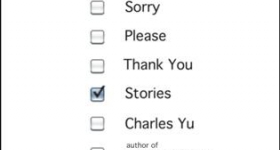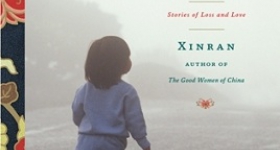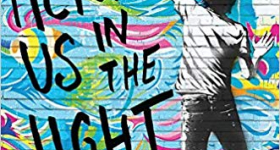In 2011, Juan Rader Bas pitched his novel to agents at The Writer’s Digest Conference in New York City. A New Jersey state taekwondo champion, Bas had written Back Kicks and Broken Promises, a novel about an adopted 17-year-old Filipino who finds self-expression and fulfillment through martial arts after moving from Singapore to New Jersey. Six agents expressed strong interest and asked to see copies of his manuscript. Interest soon turned into excited feedback as the agents repeatedly compared Bas’ work to The Brief Wondrous Life of Oscar Wao, Junot Diaz’s Pulitzer Prize-winning novel about a Dominican teenager.
Despite initial glowing reactions, all the agents eventually decided to pass on representing Bas. The economic downturn was partly to blame, as publishers were wont to take on fewer authors and risks. Having grown impatient with the traditional route of publishing, which requires representation by an agent and purchase of the manuscript by a publisher, Bas decided to take matters into his own hands by selfpublishing through Abbott Press.
“I’d spent almost 10 years working on this novel, and I was determined to get it out,” Bas says. “Self-publishing allowed me to give it some closure so I can focus on my [other] works in progress.”
Once considered a last resort and stigmatized as “vanity presses” as they were believed to be for self-promotional purposes, self-publication platforms like CreateSpace, Lulu and Kindle Direct Publishing are on the rise, with increasing numbers of talented first-time writers making use of their services. Self-published books like last summer’s runaway hit Fifty Shades of Grey are more frequently finding success with mainstream audiences and snagging spots on bestseller lists.
For Asian Americans and other people of color, self-publishing or “indie publishing” can counteract underrepresentation in publishing houses. Any cursory glance at most publisher catalogs will show that an overwhelming majority of authors being published are white. In the fall 2012 book catalogs, listings for the big six book publishers (Hachette, HarperCollins, Macmillan, Penguin, Random House, and Simon & Schuster) include at most two Asian American writers out of an average of 25 authors published (the numbers are even lower or nonexistent for other ethnicities).
Shawna Yang Ryan, the author of Water Ghosts who has also written about indie publishing, explains that while increasingly more books by writers of color are being published by major publishers, a “sense still exists that there are only a certain number of ‘slots’ to be filled” in mainstream publishing houses.
In contrast, self-publishing has the potential to broaden the discussion about Asian American issues, Bas says. “Self-publishing may not get books onto any bestseller lists right away, but it will allow more of us to share our experiences and philosophies on what Asian Americanism is.”
Why Do It?
The most common reasons to self-publish include the greater control and flexibility it affords. Authors are in full control of the content and design of the finished product. They can also produce their books within their own time frame. Whereas the path of traditional publishing can take several years, indie authors can publish within a matter of months, even mere weeks if publishing as an e-book.
Indie publishing also holds the potential for much higher profit margins. Indie authors keep 100 percent of the net profit, which they can access as soon as each book is sold. Traditionally published authors, on the other hand, must share part of the profit with publishing houses and pay their agents a commission of up to 15 percent. The remaining total of their net profit, about 10 percent of the retail price on each book sold, is only disbursed once or twice a year. Six-figure advances are rare, and the advance to first-time unknown authors can be as low as $5,000.
Chester Wong, a West Point graduate and Iraq veteran who shares his experiences in his memoir [Yellow] Green Beret, chose self-publishing not only because it was the fastest and easiest route, but also the one that would best help him remain true to his literary principles.
“I decided to self-publish mostly because I didn’t want to go through the hassle of selling my work around to all the hundreds of different literary agents... I didn’t want nor care for the scrutiny of the book publishing world looking for something that would sell,” Wong says.
Some authors, like psychiatrist and poet Ravi Chandra who selfpublished his book of poetry, a fox peeks out, see financial gain as secondary and choose to self-publish primarily to foster an audience: “[Self-publishing] is very cost-effective, and you get a nice-looking book to give away or sell.”
The Ins and Outs
John Jung, author of several self-published academic books, most recently Sweet and Sour: Life in Chinese Family Restaurants, warns aspiring authors against self-publishing pitfalls.
“Self-publishing can be deceptively easy,” he says. “Many people may not get adequate competent feedback or editorial advice before they create their book. At the next stage, unless you are a graphic artist, you may not be able to design an attractive and appropriate cover, which is important because people do judge a book by it even if they shouldn't.”
Editing and design are only the first steps on the long list of challenges that indie authors confront. They must also pay out-of-pocket for print, distribution and marketing expenses. Wong paid $20,000 upfront to publish print copies of his two books, exclusive of distribution and promotion costs, which can easily range in the tens of thousands, depending on how widely an author wants to publicize a book.
Advertising and distribution costs still prove to be the biggest financial barriers to authors who are serious about promoting their books. The lack of bookstores willing to stock self-published titles and the lack of critics willing to review them pose another tough hurdle. Unlike the traditionally published, indie authors do not benefit from the business acumen and marketing networks that a publisher provides.
The endorsement of a mainstream publishing house also goes a long way to legitimize the merits of an author’s work, as opposed to having to toot one’s horn. “I’ve definitely found it awkward to promote a book I wrote that is essentially about myself,” Wong says. “It’s like trying to sell myself to others.”
For Jung, the key to successful book promotion has been creating fortuitous relationships. “I have been extremely fortunate in making connections with influential Chinese Americans, both academic and in the community, and that has enabled me to give over 50 book talks and signings all over the US. I sold more books in-person than online via Amazon, Lulu, etc., during the first two or three years.”
E-book Explosion
Among indie authors, a greater number are going the e-book route, foregoing printing costs, eliminating middle men and selling to readers directly. As stories hit the news about authors such as Amanda Hocking and J.A. Konrath making millions off e-book sales, many more have been inspired to try for themselves.
According to the American Association of Publishers, e-book sales increased from $287 million in 2009 to $878 million in 2010, the most recent figures to date; e-book sales are predicted to surpass $2 billion in 2013.
The popularity of e-readers like the Kindle, iPad and Nook has made e-publishing a more obvious choice for authors. The continual drop in e-book prices and improvement in quality of reading devices has only further eased people into buying and reading e-books. And if forecasts that e-readers will be available for free in the near future prove true, then e-book sales are sure to skyrocket.
Higher profit margins for e-books are further fueling industry growth. Amazon offers self-published writers as much as 70 percent of revenue on digital sales of books priced between $2.99 and $9.99, compared to 15 percent on paperback and hardcover titles. It is now possible for authors to make more selling e-books at $4.99 each than a hardcopy book for $24.95.
Another positive is the lack of shelf life for e-books. E-book titles cannot be relegated to a backlist where a publisher no longer makes a book available if it doesn’t sell. Sales cycles for digital books can last forever, whereas print books enjoy about 18 months or so on bookstore shelves upon release.
Andrea Louie, author of Moon Cakes and executive director at the Asian American Arts Alliance in New York, remarked on how digitalmarketing savvy among Asian American authors has gained them more fans.
“What’s very interesting about e-books is the possibility for an author or a small press to reach new audiences on their own through social networking sites,” she says. “Authors can build audiences in new ways without going through this pre-prescribed process of finding an agent and a publisher, which not everyone has access to.”
Continuing Debates
Even for those who master self-publishing technicalities and marketing strategies, the road to success for indie authors — especially those who are Asian American — remains steep.
Critics complain that most self-published books are poorly edited, full of grammatical and typographical errors, with weak structure and unclear writing. They claim that unfettered indie publishing will glut the market with badly written books and indiscriminately expose readers to the vast “slush pile” of unsolicited manuscripts typically rejected by major publishing houses, ultimately resulting in a tarnished reading experience for all.
Proponents of self-publishing refute skeptics by arguing that traditional publishers do not always reject manuscripts because they are bad. Books that are more difficult to market, do not fit into a definable genre or do not mirror the dominant culture have a harder time making it to publication. Ryan says that “a publishing house may not have the imagination to embrace the writer’s vision,” pointing out that “many really great and forward-thinking writers of the 20th century were selfpublished — Virginia Woolf, for example.”
Publication, however, is only one important step in the process of increasing visibility of Asian American authors. “I see writing in general as a way to combat underrepresentation and being ignored or silenced,” Chandra says. “Any vehicle that makes it easier for writers to get their work into the public arena is fantastic — whether that’s online, in e-books or self-publishing.”
Chandra also calls upon an Asian American readership to support indie authors. “It's important for more people of color to get into the industry at all levels, and especially for readers to support writers of color. We should be supporting our own artists in a bigger way. Where there’s an audience, there will be publication.”
Abigail Licad is a books editor at Hyphen. She last wrote about return-to-homeland novels by first-time authors.










Comments